Active 1855–present Branch Canadian Army Size Regiment | Country Canada Type Household cavalry | |
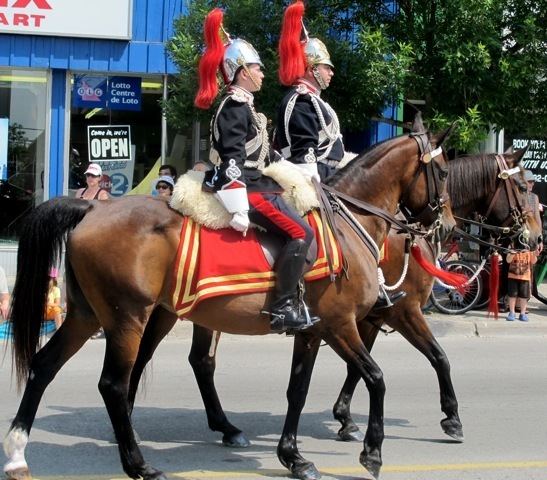 | ||
Role Armoured reconnaissance | ||
The Governor General's Horse Guards is an armoured reconnaissance infantry regiment in the Primary Reserve of the Canadian Army, part of 4th Canadian Division's 32 Canadian Brigade Group. Based in Toronto, it is the most senior reserve regiment in Canada, and the only household cavalry regiment of Canada's three household units.
Contents
- Structure
- A Squadron
- Training Support Squadron
- Regimental Support Group
- Band
- Cavalry Squadron
- Cadets
- Regimental Association
- The Governor Generals Body Guard
- The Mississauga Horse
- The Great War
- Affiliated regiment
- Alliances
- North West Rebellion
- South African War
- World War II
- War In Afghanistan
- Regimental Colours Battle Honours
- The South African War
- Afghanistan
- Notable members
- Media
- Order of precedence
- References
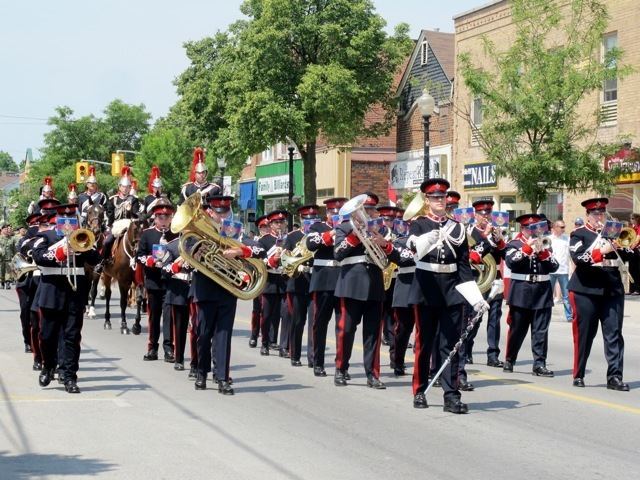
Structure
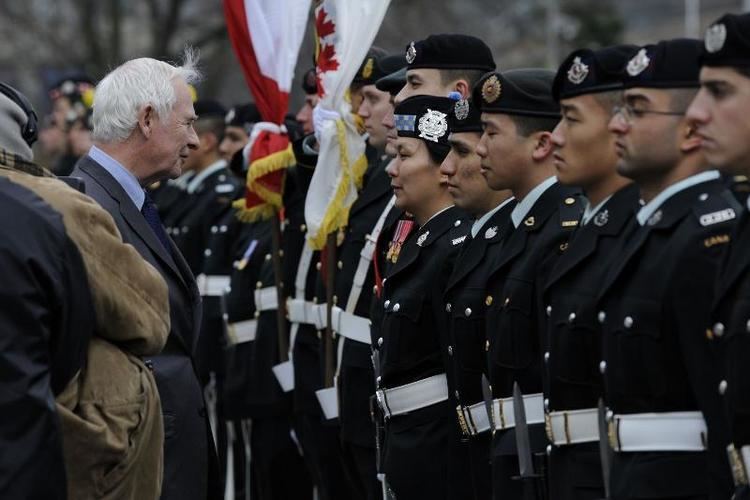
The regiment maintains a traditional structure, with squadrons and units for deployment and active duty, training, ceremony, cadets, and administration.
A Squadron

The Field Squadron ("A" Squadron) is the operational squadron and is manned by trained and deployable soldiers. It provides soldiers for Canadian Forces missions outside of Canada, and is expected to mobilize in national emergencies. The Field Squadron maintains no fewer than two armoured reconnaissance troops, using the military variant of the Mercedes-Benz G-Class Wagon, and also maintains a functional Squadron Headquarters and Administrative Echelon.
Training Support Squadron

The Training Support Squadron develops new soldiers skills to enable them to join the Field Squadron. This includes personal development through the completion of preliminary trade courses. Training Support Squadron staff also support operational planning and exercises by taking the role of an enemy unit against members of the Field Squadron in unit-level training.
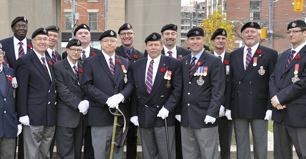
As of January 1, 2014, the training squadron (or 'B' Squadron) was disbanded and folded into the regiment's HQ squadron.
Regimental Support Group
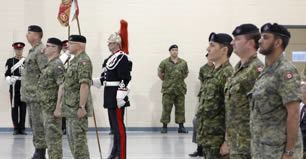
The Regimental Support Group is commanded by the Regular Force Cadre Operations Officer, and provides administrative facilities to the regiment.
Band

The full brass and reed military band provides concerts and music for regimental functions, other military events, and civilian engagements. The band includes three specialized musical sub-units: the Fanfare Trumpeters, the Brass Quintet, and the Woodwind Quintet.
Cavalry Squadron
The Cavalry Squadron provides a horse-mounted ceremonial presence at public and regimental events, to perpetuate Canadian cavalry traditions. Although it is under the command and control of the regimental commanding officer, it is privately funded by the Governor General's Horse Guards Cavalry and Historical Society Inc, a charitable organization incorporated and registered in 2012 explicitly for the purposes of supporting and promoting the traditions of the GGHG.
Cadets
The 748 Royal Canadian Army Cadet Corps and 2402 Royal Canadian Army Cadet Corps are affiliated to the regiment, and provides Canadian youth from 12 to 19 years of age with leadership training in a military setting.
Regimental Association
The Governor General's Horse Guards Association is open to all active and former members of the regiment. The association exists to keep former members informed and in touch with each other and the regiment. Throughout the year, the Association hosts a number of social events which are aimed at promoting camaraderie among all members of the regimental family past and present serving members in all five parts of the regimental family
The Governor General's Body Guard
Lineage goes back to 1810 when Buttons's Troop was formed. On 27 December 1855 formed as the 1st and 2nd Troops of Volunteer Militia Cavalry of the County of York
The Mississauga Horse
The Great War
Affiliated regiment
Alliances
North West Rebellion
The Governor General's Body Guard for Ontario mobilized for active service on 10 April 1885 and served in the Alberta Column of the North West Field Force. The unit was removed from active service on 24 July 1885.
South African War
The Governor General's Body Guard contributed volunteers for the Canadian contingents in the field.
The Great War
The 4th Battalion, Canadian Mounted Rifles CEF was authorized on 7 November 1914 and embarked for Britain on 18 July 1915. It disembarked in France on 24 October 1915. There it fought as part of the 2nd Brigade Canadian Mounted Rifles until 31 December 1915, when it converted to infantry and was allocated to the 8th Infantry Brigade, 3rd Canadian Division. The regiment was redesignated as the 4th Battalion, Canadian Mounted Rifles, CEF on 1 January 1916. The battalion disbanded on 6 November 1920.
The 7th Regiment, Canadian Mounted Rifles was authorized on 7 November 1914. The regiment was broken-up in Canada, and supplied the 2nd Canadian Divisional Cavalry Squadron (perpetuated by the 1st Hussars) and two squadrons formed the Canadian Mounted Rifles Depot in England. The regiment disbanded on 11 April 1918.
The 216th Battalion (Bantams), CEF was authorized on 15 July 1916 and embarked for Britain on 18 April 1917. There, its personnel were absorbed by the 3rd Reserve Battalion, CEF on 5 May 1917 to provide reinforcements to the Canadian Corps in the field. The battalion disbanded on 1 September 1917.29
World War II
Details from the regiment were called out on service on 26 August 1939 and on active service on 1 September 1939 as The Governor General's Horse Guards, CASF (Details), for local protection duties. Those details called out on active service disbanded on 31 December 1940. Subsequently, the regiment mobilized as the 2nd Canadian Motorcycle Regiment, CASF (GGHG) for active service on 24 May 1940. It converted to armour and was redesignated as The Governor General's Horse Guards, CASF on 9 February 1941; as the 3rd Armoured Regiment (The Governor General's Horse Guards), CASF on 11 February 1941; as the 3rd Armoured Reconnaissance Regiment (The Governor General's Horse Guards), CAC, CASF on 1 January 1943; and as the 3rd Armoured Reconnaissance Regiment (The Governor General's Horse Guards), RCAC, CASF on 2 August 1945. It embarked for Britain on 9 October 1941 and landed in Italy on 19 December 1943 as part of the 5th Armoured Brigade, 5th Canadian Armoured Division. On 20 February 1945 the regiment moved with the 1st Canadian Corps to North-West Europe as part of OPERATION GOLDFLAKE, where it continued to fight until the end of the war. The overseas regiment disbanded on 31 January 1946.
War In Afghanistan
The regiment contributed an aggregate of more than 20% of its authorized strength to the various Task Forces which served in Afghanistan between 2002 and 2014.
Regimental Colours (Battle Honours)
In the list below, battle honours in small capitals were awarded for participation in large operations and campaigns, while those in lowercase indicate honours granted for more specific battles. Those battle honours followed by a "+" are emblazoned on the regimental standard.
North West Rebellion
The South African War
Afghanistan
Notable members
Media
Order of precedence
Note: The Governor General's Horse Guards is first in precedence of Reserve regiments. Regular regiments maintain a separate precedence list.
